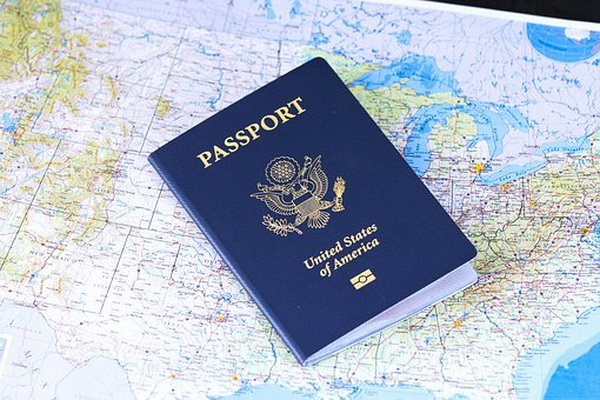You’ll have to research the options that are available to you and go through the proper steps of securing documentation. When in doubt, you can consult with a member of your country’s embassy or Department of State.
As a foreign national, there are very specific paths by which you can enter the United States – particularly if you’re looking to obtain a green card and pursue citizenship. Making yourself aware of the different options will ensure you make a smart decision.
Exploring legal options for entering the U.S.
The method you use to enter the United States depends on a variety of factors and circumstances. This includes your country of residence, your purpose for visiting, the length of your stay, and a variety of other requirements. And with that being said, here are a few options that may come into play:
1. Visa Waiver Program
The Visa Waiver Program (VWP) allows the majority of citizens and nationals of participating countries to enter the United States on a temporary travel basis and stay for up to 90 days without obtaining a visa.
In order to qualify for the VWP, you must meet certain requirements. First off, you must be a citizen of one of the approved countries. (You can see them all here.) There are currently 39 countries on the list – with Croatia set to join soon – including most members of the European Union. Secondly, you need a valid Electronic System for Travel Authorization (ESTA).
2. Family-based immigration
For individuals who want to stay in the country on a more permanent basis, family-based immigration is one of the most popular methods of legally entering the United States. U.S. citizens and all legal residents of the country can bring in foreign spouses, fiances, and unmarried children. It’s also possible to sponsor siblings who are 21 years of age or older.
3. Work visas
Another option is to enter the country via a work visa. An employer in the country can sponsor a foreign worker who has specialized skills (if they’re unable to find qualified American candidates). There are a handful of different types of work visas, so you and your employer will have to ensure you’re using the right one. (For example, there are short-term visas for specific time periods and longer-term visas for more permanent work.)
4. Student visas
There are a couple of different types of student visas.
The first type of student visa is an F visa, which permits a foreigner to the United States to pursue academic studies and/or language training programs in the country.
The second type of student visa is an M visa. This is for non-academic programs and/or vocational studies.
While getting a student visa is a fairly straightforward process, you should be aware that you’ll face certain limitations and restrictions if you wish to stay in the country on a permanent basis.
5. Fiance visas
As mentioned, family-based immigration laws allow for an American citizen or legal resident of the country to have a foreign national fiance enter the country. This happens under a K-1 visa, which is issued by U.S. Citizenship and Immigration Services.
“Before filing for a fiancé visa, a couple must typically have seen each other in person within the previous two years,” Boundless explains. “The foreign partner applying for the fiancé visa must marry their U.S. citizen partner within 90 days of entry, or depart the United States.”
It’s this latter part of the K-1 visa that must be carefully considered. If you don’t marry your fiance within 90 days, they can be deported. So if you don’t plan on marrying right away, you’ll want to consider other options.
6. Visa Lottery
Did you know that the United States offers a Diversity Visa Lottery program? Each year, the government issues 50,000 random visas to people who live in countries that are known to have low immigration numbers to the U.S. While the chances of qualifying are low, it could be an option if you’re in a particular country without much immigration activity.
7. Asylum seekers
If you show up to a U.S. port of entry and seek asylum in the country (and can prove that you’ve been persecuted in your home country), you’ll receive protections from the United States as a refugee.
US Tourist Visa – Indians can also get a US tourist visa if they’re not looking to move permanently. The tourist visa usually is given for 3 or 5 years with multiple entries, and each entry allows a stay of up to 3 or 6 months. If you’re someone who wants to visit the US to go to cities like New York (for the coveted “Life in Big Apple” feels), Los Angeles (to spot film stars), or Las Vegas (although the growing popularity of Indian online casinos is fast eliminating the need for this), then you can simply apply for the US tourist visa but bear in mind that it can take up to a few months to get.
Adding it all up
Every situation is going to be unique. You’ll have to research the options that are available to you and go through the proper steps of securing documentation. When in doubt, you can consult with a member of your country’s embassy or Department of State. They should be able to provide you with more specific information on what you need to do in order to legally and safely travel to the United States.


























































































































































































































